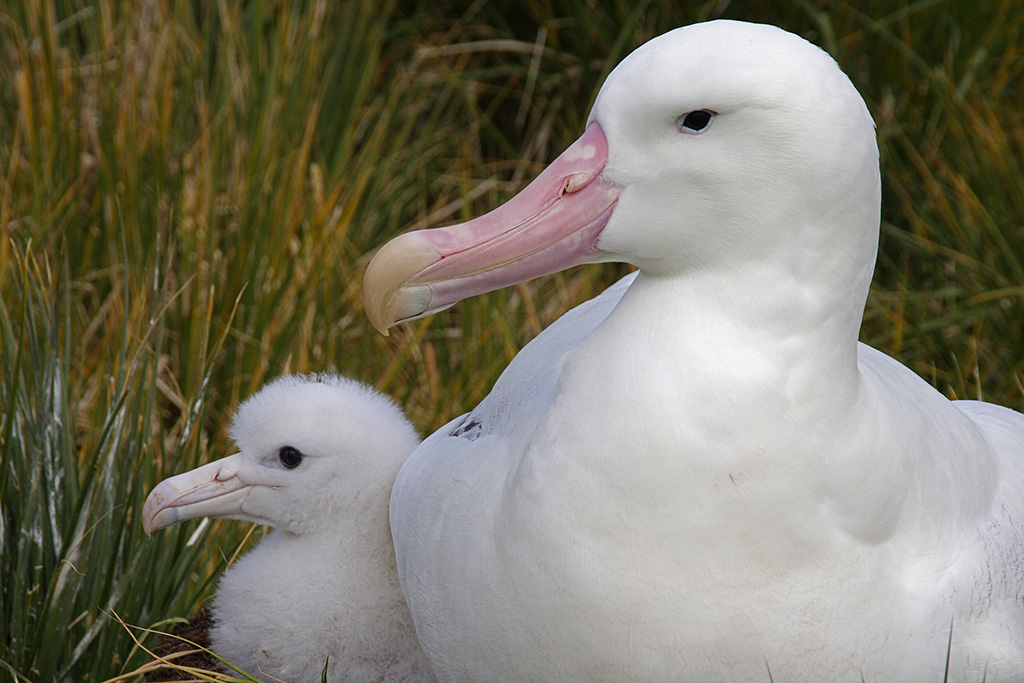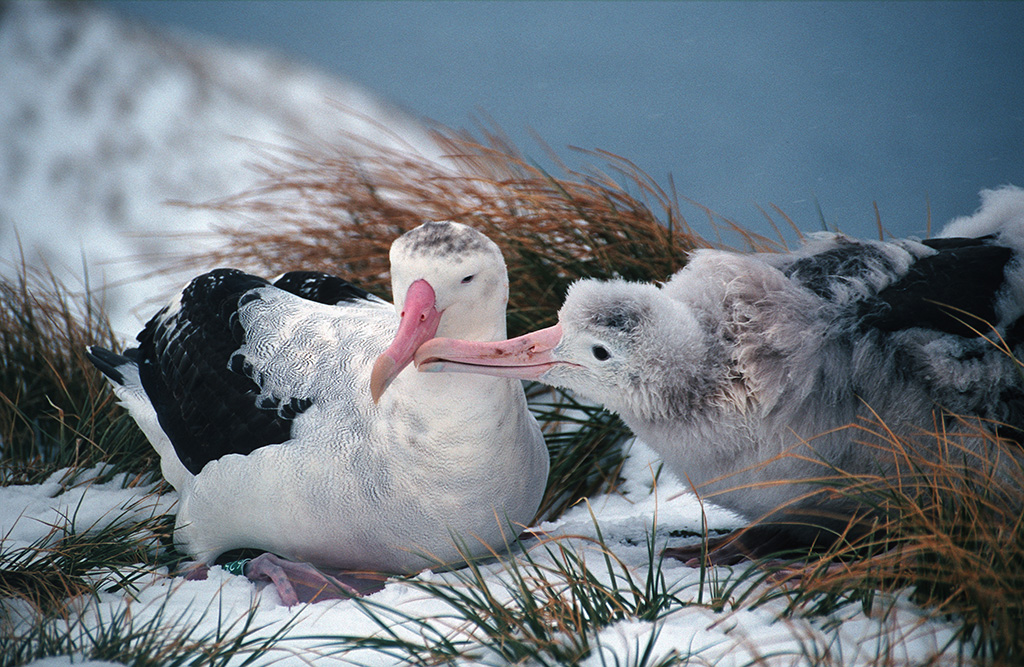NEWS STORY: Age no barrier for albatrosses
Saving the best for last – wandering albatrosses” last push for successful parenting
Romanticised in poetry, the wandering albatross is famed for its enormous wing-span and long life. The bird can often live to 50 years and beyond.

But now a group of scientists from the University of Edinburgh and British Antarctic Survey (BAS) have identified another feature. The birds, which often mate for life, are more likely to successfully raise a chick when they breed for the last time.
The team used data collected from BAS’s research station at Bird Island off South Georgia over a thirty year period. Chicks there have been ringed since 1972 so most of the population is of known age.
The wandering albatross has a low reproductive rate. A single egg is laid on each breeding attempt.
The birds’ ability to provide for their young declines after around fourteen years of age, most likely because older albatrosses become less capable of finding food for their young.

However the researchers found that the albatrosses’ capacity to raise chicks improves again when they have their final chick.
This could be because they increase the effort they put into rearing just before they die – by adjusting that effort to compensate for their declining physiological status.
Hannah Froy of the Institute of Evolutionary Biology at the University of Edinburgh said: “This improvement in breeding success at the end of life is indicative of what we call ‘terminal investment’, which is rarely documented in vertebrates. By increasing the investment in the last chick, individuals may be able to capitalise on one final opportunity to pass on their genes before they die.”
Dr. Richard Phillips, of the British Antarctic Survey in Cambridge, said: “These exciting new results emphasise the value of long-term monitoring of albatrosses. Individual-based studies of these very long-lived birds not only provide valuable data for conservation, but also opportunities to test theories of ageing in wild animals.”
The study is published in Ecology Letters
It was supported by a George Macdougal Mackintosh Scholarship, the Natural Environment Research Council (NERC) and the Biotechnology and Biological Sciences Research Council.
Contact
For more information please contact Paul Seagrove in the British Antarctic Survey press office on +44 (0)1223 221414 or by email: psea@bas.ac.uk